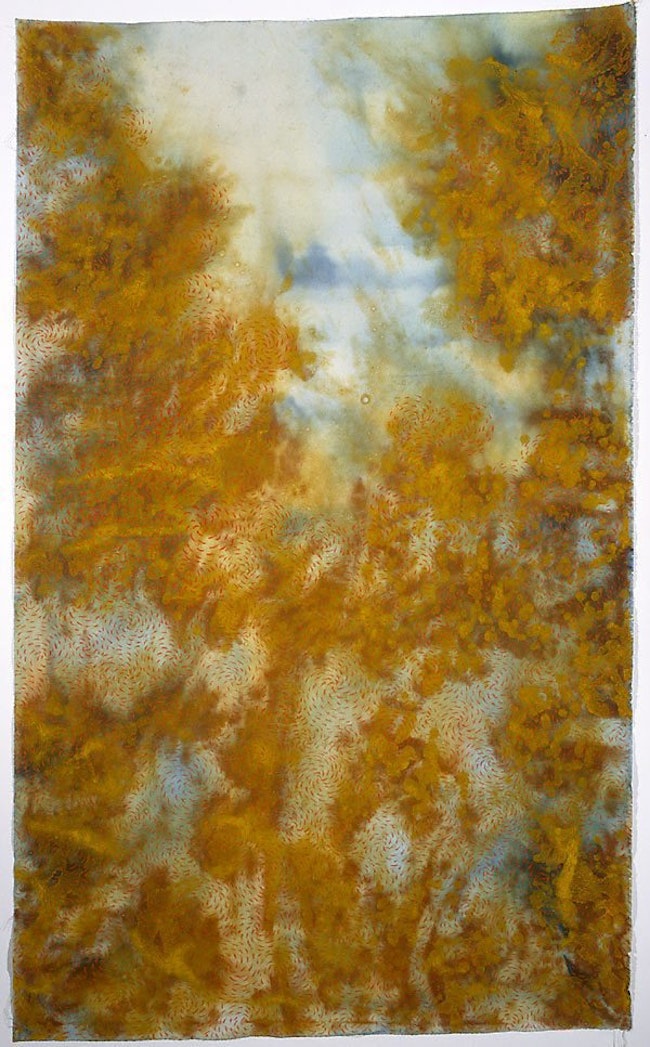The art that made me: Shireen Taweel
In The art that made me, artists discuss works in the Art Gallery of New South Wales collection that either inspire, influence or simply delight them.

Shireen Taweel, photo: Leigh Griffith
Shireen Taweel, photo: Leigh Griffith
Shireen Taweel is a Sydney-based artist living and working on Gadigal Country. Her practice draws from the transient experiences of living between cultures, and the physical spaces within her Lebanese–Australian community, which reflect the complex cultural landscape of transformation through hybridity and plurality. The research and project development of Taweel’s works are often site-specific and embedded in local narratives, fusing conceptual and contemporary practice with traditional coppersmithing. Her works – such as tracing transcendence 2018–20, which was recently acquired by the Art Gallery of New South Wales – often reflect a sense of cross-cultural discourse, open dialogues of shared histories and fluid community identities.
Judy Watson red tides 1997

Judy Watson red tides 1997, Art Gallery of New South Wales © Judy Watson / Copyright Agency
Judy Watson red tides 1997, Art Gallery of New South Wales © Judy Watson / Copyright Agency
The autumnal tones in Judy Watson’s work spoke to my affinity with copper. When I first saw the work, I was very young, and I had felt that the tones had a likeness to copper which I thought at the time was an autumn metal. Looking through the burnt yellow in red tides into a greying wash of fading light and memory brought to mind the characteristically transformative nature of copper and the acknowledgment that it has played a significant role in the construction of culture and place for me. I think in Judy Watson’s work I recognised a sense of place and the changes that occur through time and circumstance and like memories washing over her, I saw my culture and memories recorded in a metal and expressed in a season.
Hossein Valamanesh Longing belonging 1997

Hossein Valamanesh Longing belonging 1997, Art Gallery of New South Wales © Hossein Valamanesh & Rick Martin
Hossein Valamanesh Longing belonging 1997, Art Gallery of New South Wales © Hossein Valamanesh & Rick Martin
The fire mirrors the shape of the tree. The tree to the left of the fire is the fire’s shadow. I remember when I first spent some time with the work, the ritual synthesised the exterior and interior spaces, the environment and the personal. For me, scent or fragrance plays a significant part in not only ritual but also place, and something I couldn’t shake was the scent I perceived in the artwork. The burning outback timber, the burning woollen rug, a mixed fragrant incense specific to place and time. I felt like digging my hands into the warm dirt and mixing it with the blackened woollen weave and the charcoal.
Pukumani grave posts 1958

Laurie Nelson Mungatopi, Bob Apuatimi, Jack Yarunga, Don Burakmadjua, Charlie Kwangdini, Tiwi artist Pukumani grave posts 1958, Art Gallery of New South Wales © The artists / Copyright Agency
Laurie Nelson Mungatopi, Bob Apuatimi, Jack Yarunga, Don Burakmadjua, Charlie Kwangdini, Tiwi artist Pukumani grave posts 1958, Art Gallery of New South Wales © The artists / Copyright Agency
The thought of having to say a final goodbye to somebody had a profound effect on me, the first time I stood with the Tutini (Pukumani grave posts). It was the idea that the fragile and temporal interconnectedness with which we bind ourselves to others would finally rupture, that resonated for me within the 17 sculptures. Each post challenged and contradicted my aesthetic judgement of balance and form, the posts moved and swayed, breaking down my personal equilibrium, preparing me for a sense of departure, a send-off that joyously celebrated the sensitivity and precariousness of our relationships to one another.
Doris Salcedo Atrabiliarios 1992–97

Doris Salcedo Atrabiliarios 1992–97, Art Gallery of New South Wales © Doris Salcedo
Doris Salcedo Atrabiliarios 1992–97, Art Gallery of New South Wales © Doris Salcedo
When I first encountered Atrabiliarios I was drawn to the spectral opaqueness of the cow hide-covered cavity that appeared to enshrine the shoes, causing them to hover between the beginning and the end of memory. The shoes being without line or scuff to vouch for a smile or a tear seemed to steal the possibility for a sense of resolution. I thought of the disruption and unknowing of a sudden disappearance and how this could entrap the soul of somebody you love, holding them fixed in a moment of time lost to grief, a relationship deprived of an end, a narrative limbo.
A version of this article first appeared in Look – the Gallery’s members magazine